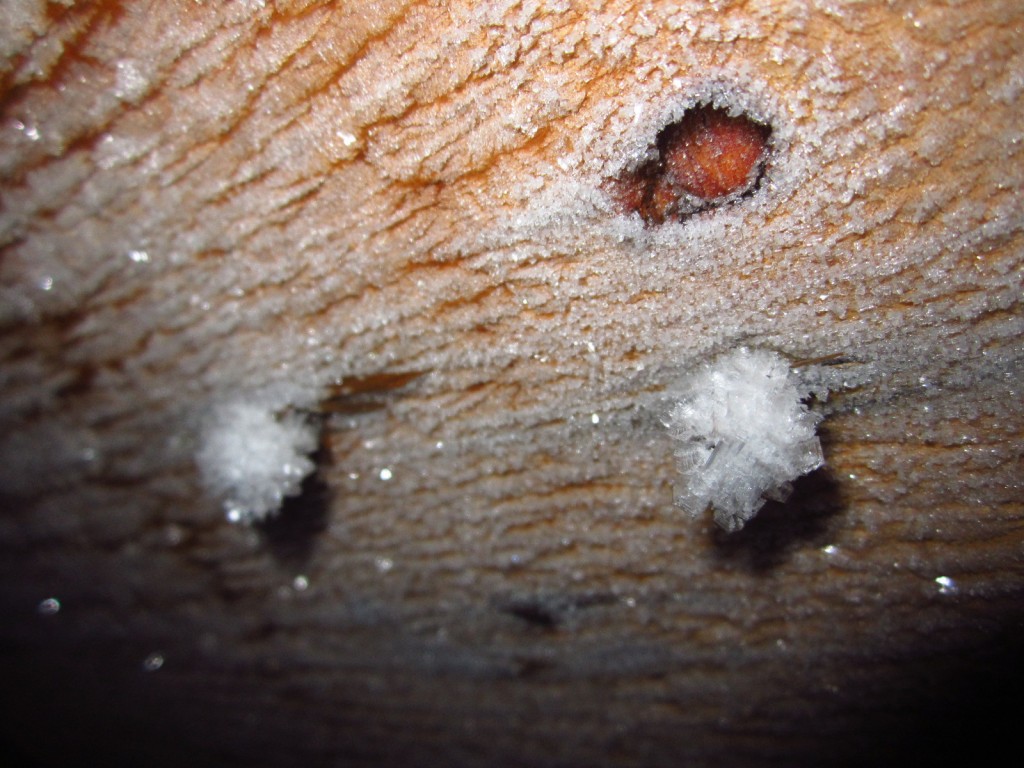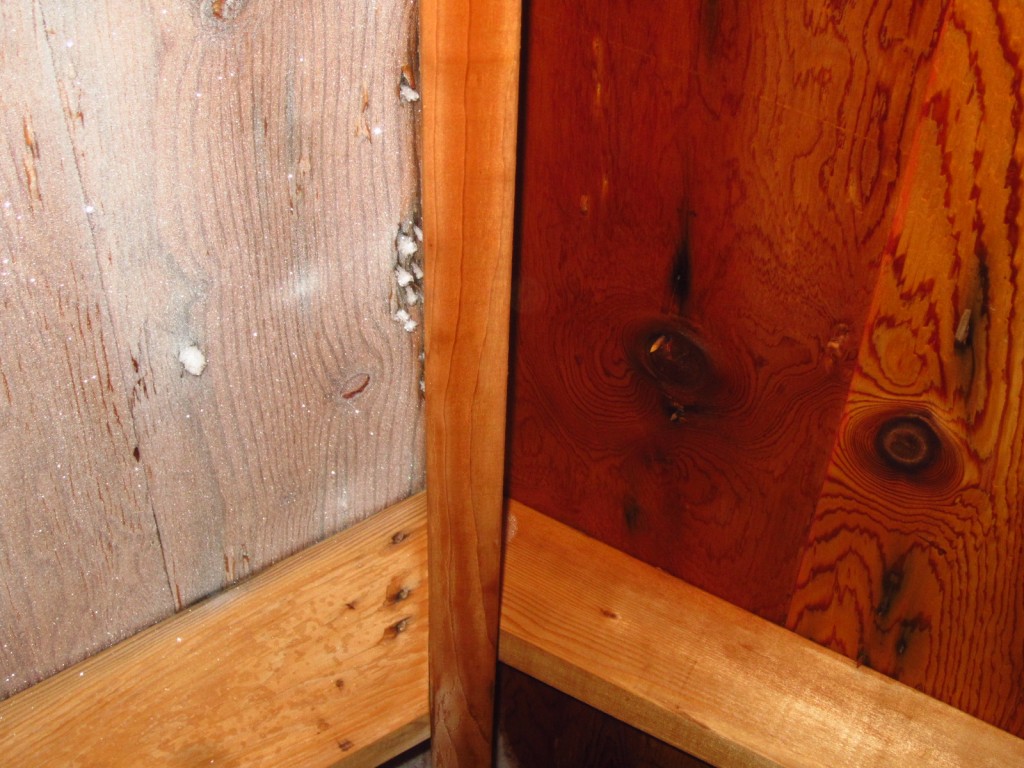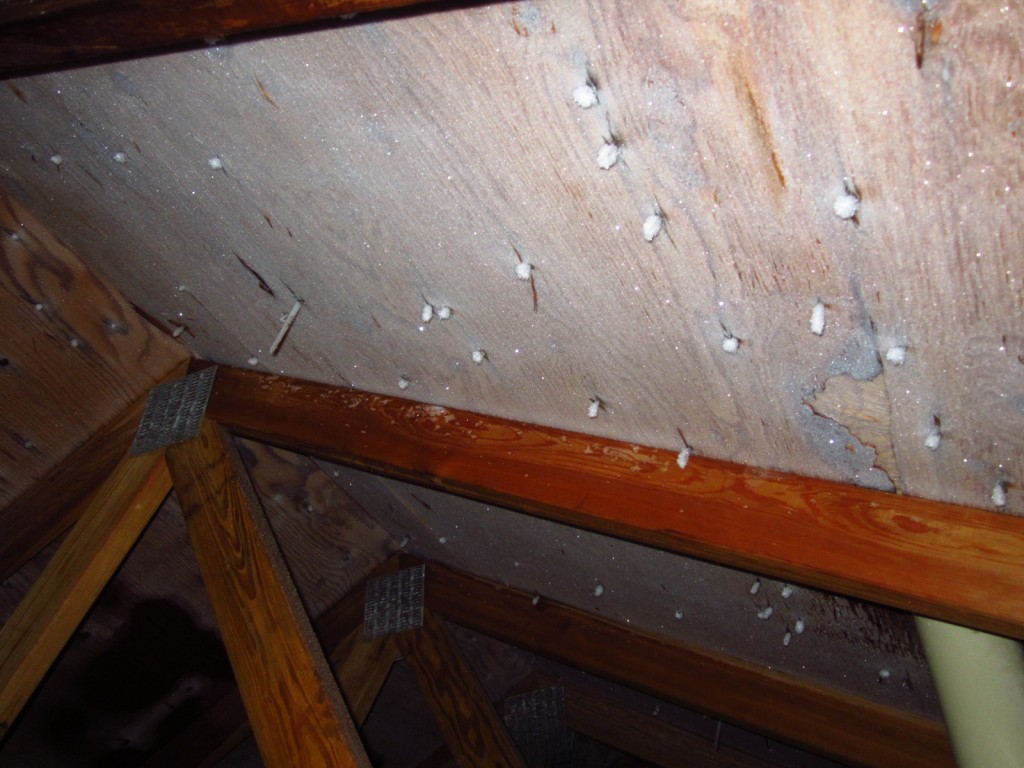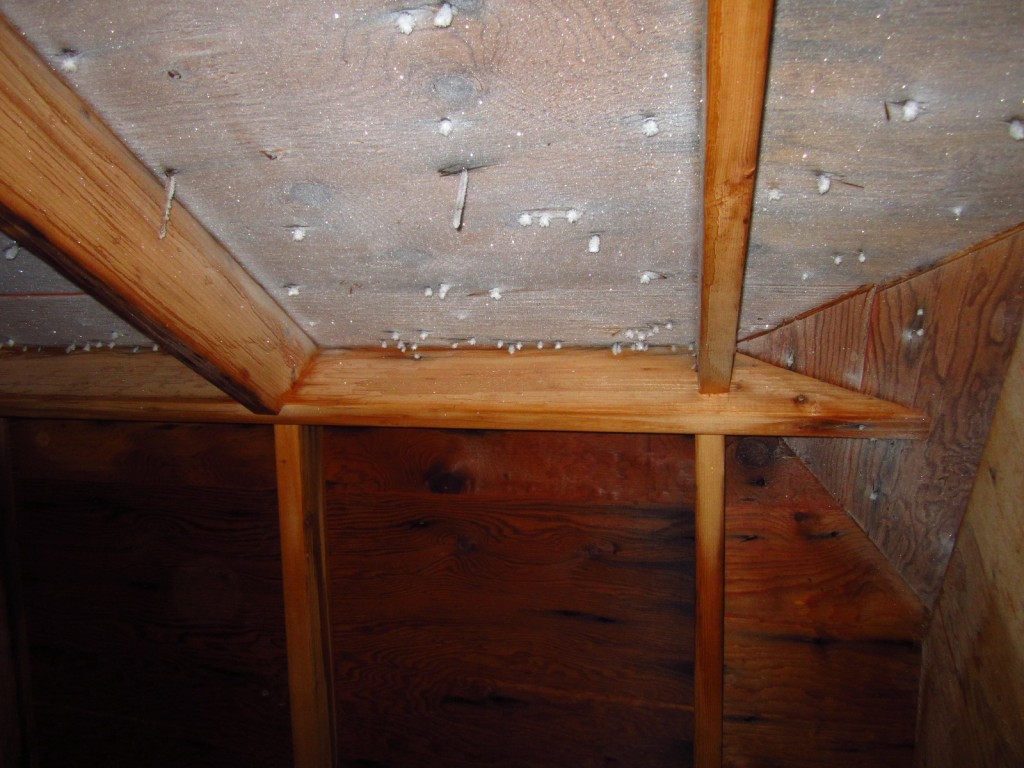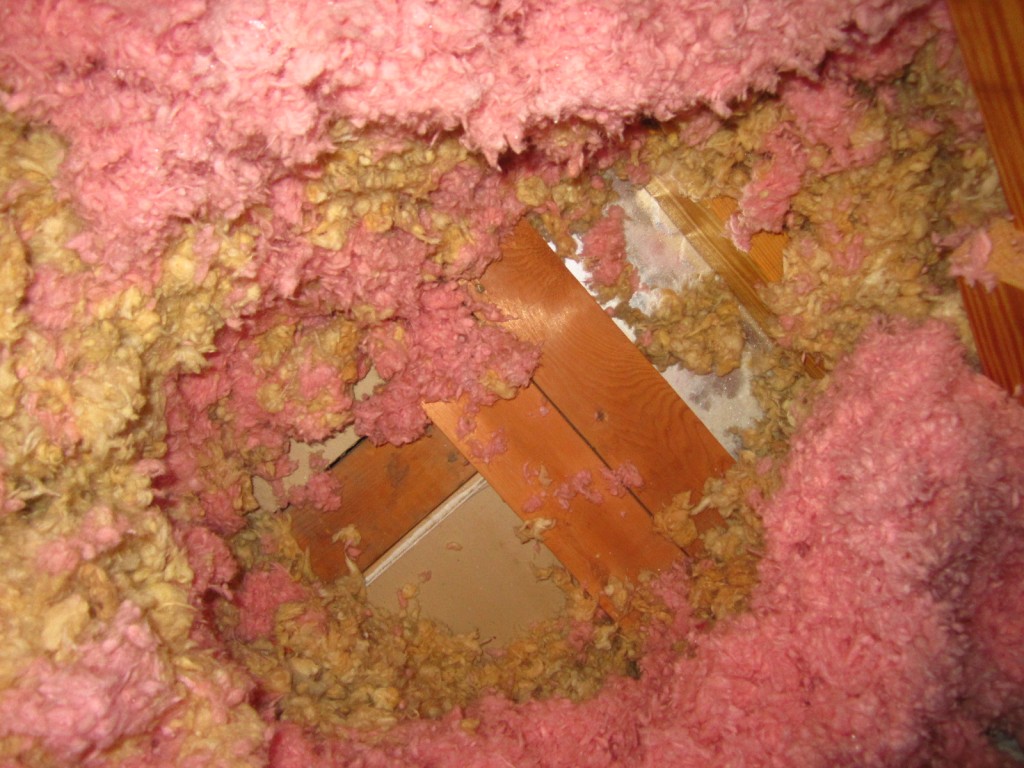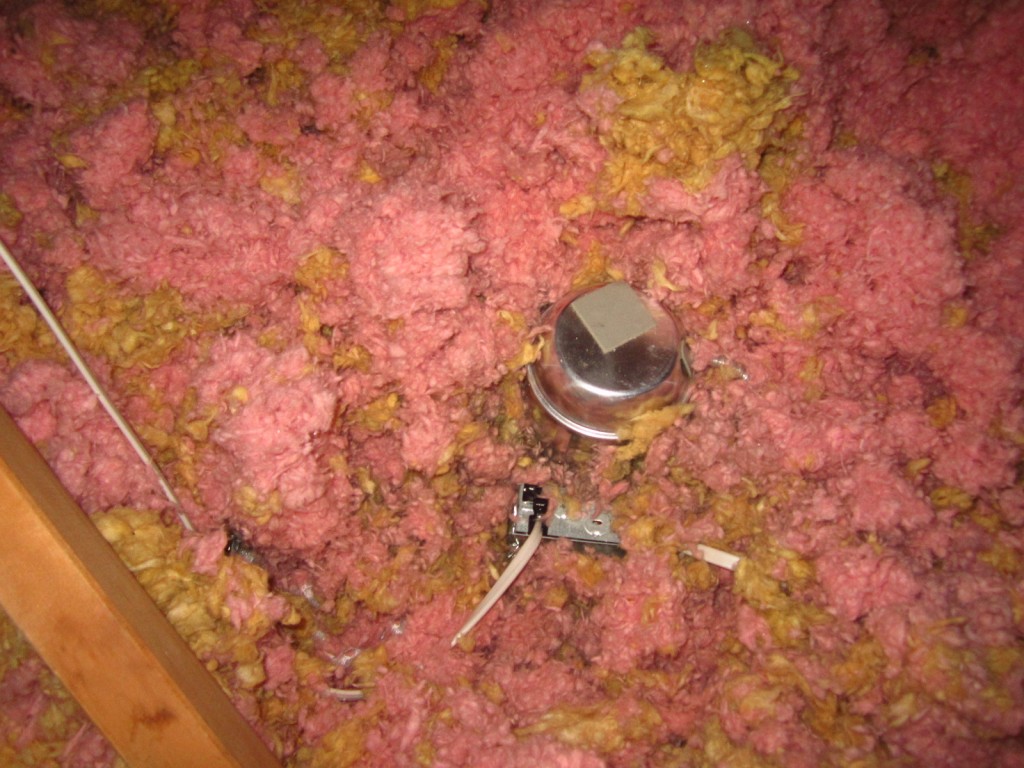Attic Frost: The Other…. Silent Killer
If you haven’t taken a look in your attic space lately, it might be a good idea to take a quick glance around this winter.
Who goes in their attic space in the winter? Come to think of it, who ever goes in their attic space? It’s not usually the most comfortable atmosphere which explains why few of us venture beyond the attic access hatch.
These last few winters we’ve been getting more and more calls to repair “roof leaks”, “ceiling damage”, “skylight leaks”, and “leaks because of ice dams”. When we arrive at the home to check it out we have discovered there weren’t any issues with the roof. No bad flashings around the skylights or chimney and not enough snow and ice on the roof to be the culprit. So, what is causing all of these leaks during the winter if it isn’t rain, snow or ice? The one common denominator that we found was frost (or moisture) in the attic space. Most homeowners never look in their attic spaces, and if moisture is present, slowly but surely, it can cause damage without the homeowners knowing about it.
Signs of Frost
If it is present, frost is usually quite easy to spot in the attic space. Frost will form on the underside of the roof deck, along framing members and even on the topside of the insulation. But let’s say that it is a warm day and the frost has melted. What are you looking for? You’d be looking for wet/damp insulation, crusty or crisp insulation, delaminated plywood, signs of mold or mildew growth on the underside of the roof deck, rotten or discolored framing, unexplained staining on the ceilings of your rooms, or drips from lighting fixtures or other penetrations in the ceilings.
Common Causes of Attic Frost
In order to eliminate frost build up in the attic space, we have to understand what causes it in the first place. Frost in your attic space is a sign that warm, humid air is somehow getting into your attic space. Since our Minnesota winters are usually dry, the only other source of humid air is your living space. How does humid air get from our house and into the attic? Lots of ways, many of which are small is difficult to detect. Examples include improperly sealed attic hatches, gaps around pipes and penetrations that go from the living space up into the attic, recessed lights and more. As that warm, humid air gets into the attic space, it condenses on the roof decking, framing, and even on the insulation. When the temperatures dip below freezing, the condensation quickly turns to frost. See photos of what that looks like.
In no particular order, here are some common causes of frost build up in the attic space.
– #1: Warm Air Bypasses – gaps, cracks, holes where warm air is allowed to enter the attic space from below (electrical, plumbing, wall plates, etc). See photos below for several examples.
– Homeowner Usage – has the humidity too high in the house by (a) not running bathroom or kitchen fans, (b) HVAC controls set improperly, and/or (c) running portable humidifiers
– Lack of proper insulation in the attic space
– Poorly defined thermal barriers, confused attic spaces
– Lack of proper ventilation to your attic space
Solving the Frost/Moisture Issue
WARNING – DO NOT JUST ADD INSULATION. This will do nothing, and perhaps make your problem worse. There are a number of items that you need to take into consideration if you want to control the moisture levels in your attic space. You need to take a holistic approach to dealing with moisture. There is no one solution alone that will solve the issue. Depending on the house and the occupants, the scope of work usually involves some combination of the following:
Air Sealing: air sealing of the warm air bypasses, thus eliminating or minimizing the amount of humid air that can enter the attic space is a MUST.
Ventilation: assessing the ventilation of the attic space is also a MUST. If warm, humid air does get into the attic space, is there enough air flow to either carry it out or to help evaporate and get rid of the moisture.
Insulation: assess the amount of insulation in the attic space. Is it up to code, do you have enough of a thermal blanket? Usually, when air sealing, you disturb the existing insulation enough, that it makes sense to blow in additional insulation for R-value.
Humidity Control: some homeowner’s don’t want to hear this, but you need to monitor the indoor humidity levels.

